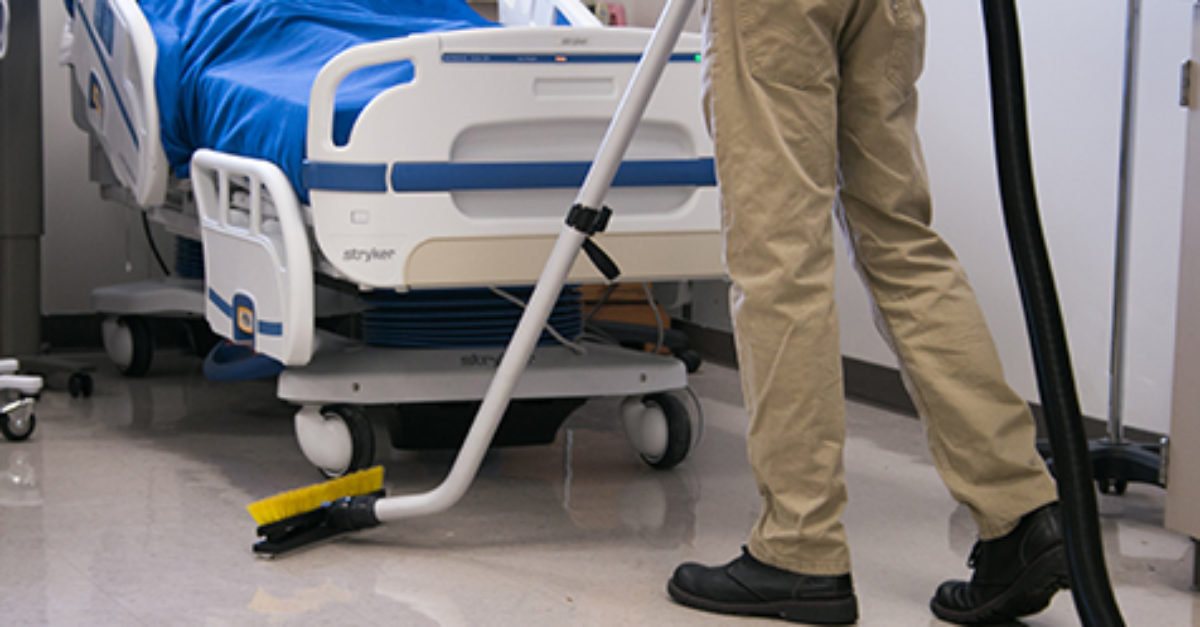Facility managers of hospitals around the world are preparing for the novel coronavirus and putting action plans in place to manage the pandemic as it arrives at their doorstep. Their top priority is to keep their facilities healthy, protect their staff, and prevent the virus from spreading, especially from cross contamination.
Although COVID-19 is one of the newest concerns for hospitals, the related problem of nosocomial infections—also known as hospital-acquired infections (HAIs)—has been around for decades and is still a worry for many health care facilities.
Nosocomial infections are typically caused by antibiotic-resistant bacteria. Antibiotic cocktails made up of several antibiotics are used to fight these diseases, but they are often ineffective.
When asked why HAIs occur, health officials generally blame poor hand hygiene and the prolonged use of intravenous lines and urinary catheters. These infections can also spread through heating and air conditioning systems that harbor bacteria. Once released into the air, the bacteria can be inhaled or land on touchable surfaces.
One more source of HAIs, as well as infections in schools, office buildings, airports, and convention centers, is custodians. This form of transmission has even been given a name: janitor-induced infections or janitor-induced cross contamination.
“There are many ways that cross contamination can occur while performing janitorial tasks,” said cleaning consultant Robert Shor. Formerly a practicing physician and surgeon, Shor now helps organizations develop cleaning and disinfection protocols that protect human health. “Contaminated mop heads and towels are common culprits,” he said.
Learning from the past
We have known since the early 1970s that mops can contaminate surfaces. From the moment they are used in the cleaning process, they begin to collect pathogens. With continued use, the contaminants saturate the mop, and the mop heads end up spreading pathogens instead of removing them. This notion goes hand in hand with the findings of a 2017 study by researcher Abhishek Deshpande and others published in the American Journal of Infection Control, which suggest that floors in hospital patients’ rooms are frequently contaminated with disease-causing pathogens, many of which can cause HAIs.
It is obvious how cross contamination can occur if pathogens are on frequently touched surfaces. However, these pathogens can also transfer from the floors to patients if, after walking over a contaminated floor, patients touch the bottoms of their shoes or slippers and then touch their mouth, eyes, or nose.
In response to this phenomenon, some cleaning experts now encourage the industry to look for “no mop” floor-cleaning alternatives, such as spray-and-vac cleaning systems. Especially now with coronavirus being a concern along with HAIs, we must take all steps necessary to protect human health.
The problem of gloves
Beyond mops and towels, Shor identifies another source of custodian-induced infections: the gloves used in cleaning. Cleaning professionals are encouraged to wear gloves whenever they are performing cleaning tasks, but according to research from the American Society for Microbiology, pathogens can live on these gloves—as they do on any surface—for long periods of time.
Complicating matters, cleaning workers are given few rules about how to keep their gloves clean to prevent the spread of disease.
For example, the U.S. Centers for Disease Control and Prevention (CDC) provides the following guidelines for doctors and staff working with patients:
- Examination gloves should be changed as soon as possible when working with patients and whenever they are visibly soiled, punctured, or torn
- Gloves must be changed after working with each patient
- Hands must be washed after gloves are removed.
No precautions such as these are routinely given to cleaning workers in a medical setting—or any setting, for that matter. A cleaning worker in a school, for instance, may wear the same gloves after cleaning each classroom or even each restroom. This means that if harmful pathogens are collected on gloves after cleaning one room, those pathogens are likely to be transferred to the next room.
What’s more, cleaning equipment may also become coated with pathogens. For example, a mop pole can become contaminated by dirty gloves. If the same pole is used by another cleaning worker, those pathogens can then be transferred to that worker’s hands or gloves as well.
What cleaning workers can do to prevent cross contamination
As with any challenge, there are solutions. Shor suggests that cleaning professionals change gloves in the following situations:
- When the gloves become visibly soiled, have tears, or are punctured
- After cleaning restrooms and kitchens
- If using a color-coded cleaning system, after changing to a new color-coded product
- When going from one building to another or one floor to another.
In addition, workers must remove their gloves properly, first by pulling on one corner of each glove and then allowing the glove to fold inside-out as it is removed. Once the gloves are removed, workers should wash their hands thoroughly. Although hand sanitizers can be used, they can only kill surface-level pathogens. Hand washing removes pathogens embedded in the skin.
With the proper knowledge, cleaning tools, and procedures, cleaning professionals can help prevent the spread of infection and continue to safeguard the health of those who use their facility.




